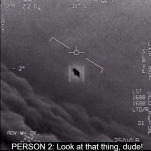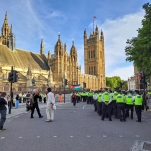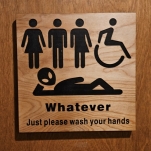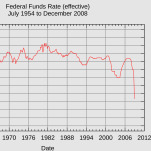If you use Waze, hackers can stalk you
Millions of drivers use Waze, a Google-owned navigation app, to find the best, fastest route from point A to point B. And according to a new study, all of those people run the risk of having their movements tracked by hackers.
Researchers at the University of California-Santa Barbara recently discovered a Waze vulnerability that allowed them to create thousands of “ghost drivers” that can monitor the drivers around them—an exploit that could be used to track Waze users in real-time. They proved it to me by tracking my own movements around San Francisco and Las Vegas over a three-day period.
“It’s such a massive privacy problem,” said Ben Zhao, professor of computer science at UC-Santa Barbara, who led the research team.
Here’s how the exploit works. Waze’s servers communicate with phones using an SSL encrypted connection, a security precaution meant to ensure that Waze’s computers are really talking to a Waze app on someone’s smartphone. Zhao and his graduate students discovered they could intercept that communication by getting the phone to accept their own computer as a go-between in the connection. Once in between the phone and the Waze servers, they could reverse-engineer the Waze protocol, learning the language that the Waze app uses to talk to Waze’s back-end app servers. With that knowledge in hand, the team was able to write a program that issued commands directly to Waze servers, allowing the researchers to populate the Waze system with thousands of “ghost cars”—cars that could cause a fake traffic jam or, because Waze is a social app where drivers broadcast their locations, monitor all the drivers around them.
The attack is similar to one conducted by Israeli university students two years ago, who used emulators to send traffic bots into Waze and create the appearance of a traffic jam. But an emulator, which pretends to be a phone, can only create the appearance of a few vehicles in the Waze system. The UC-Santa Barbara team, on the other hand, could run scripts on a laptop that created thousands of virtual vehicles in the Waze system that can be sent into multiple grids on a map for complete surveillance of a given area.
In a test of the discovery, Zhao and his graduate students tried the hack on a member of their team (with his permission).
“He drove 20 to 30 miles and we were able to track his location almost the whole time,” Zhao told me. “He stopped at gas stations and a hotel.”
Last week, I tested the Waze vulnerability myself, to see how successfully the UC-Santa Barbara team could track me over a three-day period. I told them I’d be in Las Vegas and San Francisco, and where I was staying—the kind of information a snoopy stalker might know about someone he or she wanted to track. Then, their ghost army tried to keep tabs on where I went.
Users could be tracked right now and never know it. — Ben Zhao, UC-Santa Barbara computer science professor
The researchers caught my movements on three occasions, including when I took a taxi to downtown Las Vegas for dinner:
-

-

-

-

-

-

-

-

-

-

-

-

-

-

-

-

-

-

-

-

-

-

-

-

-

-

-

-

-

-

-

-

-

-

-

-

-

-

-

-

-

-

-

-

-

-

-

-

-

-

-

-

-

-

-

-

-

-

-

-

-

-

-

-

-

-

-

-

-

-

-

-

-

-

-

-

-

-

-

-

-

-

-

-

-

-

-

-

-

-

-

-

-

-

-

-

-

-

-

-

-

-

-

-

-

-

-

-












































































































